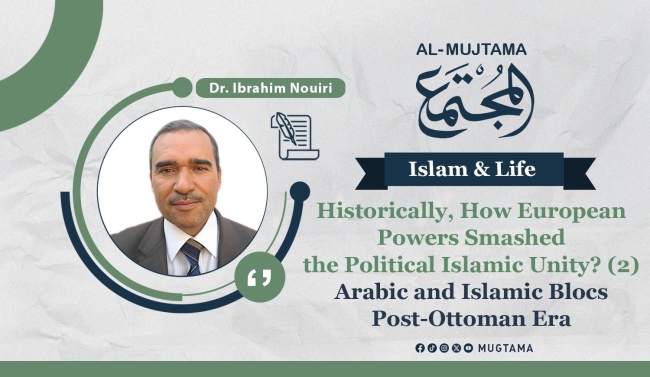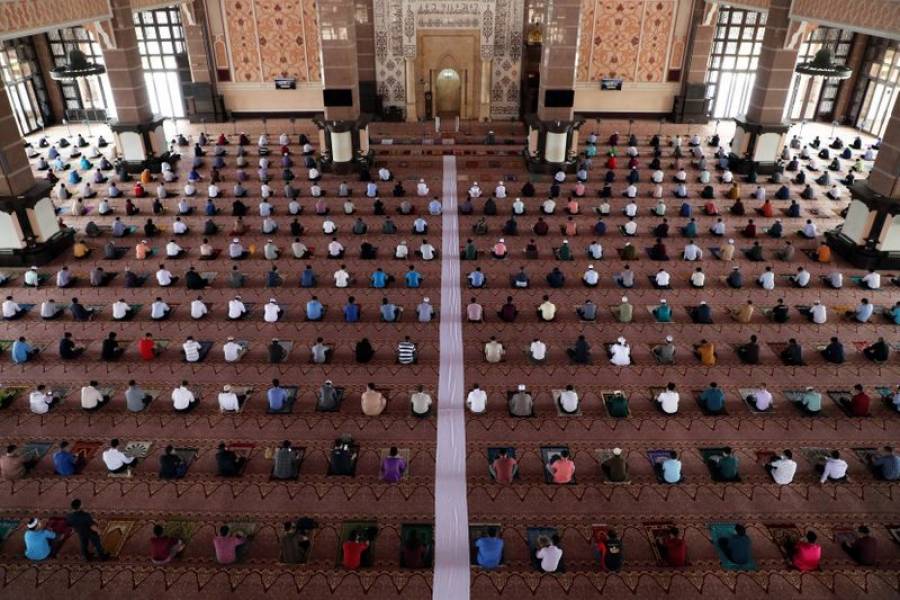Historically, How European Powers Smashed the Political Islamic Unity? (2) Arabic and Islamic Blocs Post-Ottoman Era
After a century since the fall of the last (Ottoman) Islamic Caliphate, or political Islamic unity, and after reviewing, in the previous article, a historical analysis of the European powers during the Ottoman Caliphate and their role in fragmenting Islamic unity, this article seeks to review and examine the most prominent opinions and formulations presented by a group of contemporary Islamic thinkers after the downfall of the Caliphate.
Upon revisiting the discipline of contemporary Islamic discourse regarding political unity formulations, it is observed that adherents to this discourse can be divided into three groups or orientations, outlined as:
Adherents of this approach believe that the realistic formulation of unity lies in regional blocs or the integration of two systems
The first approach: Regional Blocs:
Adherents of this approach argue that if political unity implies the abolition of individual statehood and merging into a unified administrative entity, similar to the days of the Islamic Caliphate, it is practically far-reaching due to various factors. These factors include the entrenched concept of nation-states, the nationalist perspective on sovereignty, and other considerations. Therefore, the realistic formulation of unity lies in regional blocs or the integration of two political systems into one. Here are some of the most prominent examples of this approach in the contemporary era, i.e., after the fall of the Ottoman Islamic Caliphate: (1)
- The Experience of the United Arab Republic: This was a regional attempt at unity between Egypt and Syria, established in 1958 under the name “United Arab Republic.” Egypt became known as the Southern Region, while Syria was referred to as the Northern Region. However, this unity did not last long, and separation occurred in September 1961.
- The Experience of the Arab Federation: This experiment also took place between the Hashemite Kingdom of Jordan and the Kingdom of Iraq in 1958. However, this union lasted only a few months, as a military coup took place in Iraq on July 14 of the same year, leading to the dissolution of the union and the announcement of a new direction for the state.
- The Experience of the Federation of Arab Republics: This experiment took place in 1971 between Egypt, Libya, and Syria. The union was a form of cooperation in various fields and did not abolish the sovereignty of the three countries. Syria was the most committed to this union, to the extent that the 1972 constitution explicitly stated: “The Syrian Arab Republic is a member of the Arab Republics Federation and part of the Arab nation.”
- The Experience of the Arabic–African Federation: This experiment brought together Libya and the Kingdom of Morocco in 1984. However, this union quickly succumbed to failure due to significant differences between the nature of the two political systems.
Dual, triple, or quadruple unity is indeed a sign of well-being and a desire for the unity of the nation
- The Experience of Unity between Tunisia and Libya (Arab Islamic Republic): This experiment was announced on the Tunisian island of Djerba in 1972. It was one of the fastest unity experiments to fail, as it was weak, feeble, and stillborn. It served as a testament to the improvisation and haste in making random political decisions regarding the fate of nations. Evidence of this is that the union was dissolved shortly after its signing.
- The Treaty of Saadabad between Afghanistan, Iran, Turkey, and Iraq: This treaty was officially announced in Saadabad Palace in Tehran on July 8, 1937. The agreement of this treaty includes the protection of shared borders, non-interference in internal affairs, and continuous consultation on international issues related to the common interests of the countries in this agreement.
Some advocates of this approach believe that dual, triple, or quadruple unity is a sign of well-being and a desire for national unity, but only according to the harmony formula of the regions, based on the type of existing systems, demographics, and economic level of those regions.
As to the unity that brought together Egypt, Jordan, Iraq, and Yemen under the title “Arab Cooperation Council,” the Director-General of the Religious Institutions and clerics in Iraq says: “What encouraged the establishment of the Arab Cooperation Council was the similarity and correlation in many prevailing matters in these four countries. The idea of its establishment has been brewing in the minds of its leaders for a long time, as the similarity of internal situations leads to the establishment of a form of cooperation.” (2)
The Islamists did not oppose regional unity but rather supported and enthusiastically embraced it, motivated by the revival of Islamic unity
Responding to the General Trend
What manifests in the intellectual and political discourse presented by adherents of this approach is represented in responding to the general orientation that has been imprinted on all trends and currents within the Ummah in general and the Arab world in particular regarding the issue of unity. Throughout history, unity has been a common denominator among all factions and intellectual orientations of the Arabs. At that time, it was not significant to raise questions such as: How can this unity be achieved, and what is its nature? Among those currents, there were none who considered the idea of unity as political romanticism; rather, there was competition among many trends, conflicts, and ideologies to achieve unity. Each direction viewed itself as the most capable and competent to turn the Arabs' dream into a tangible reality.
In the midst of the dominance of the idea of unity in the intellectual and ideological references of various currents, several figures associated with the Islamic discourse did not show any reluctance to support some forms of partial unity, those that brought together two or three or more entities, commonly referred to as “regional unity.” An example of this is Sheikh Yusuf al-Qaradawi, who stated: “The unity between Egypt and Syria failed, despite being the greatest step towards unity in our time, and was welcomed by Arabs everywhere with overwhelming joy, immense greetings, and unprecedented approval. I witnessed that myself. However, this fortress quickly collapsed and crumbled, fading into history due to the tyranny and oppression that violated human rights and the freedom of citizens. The Syrian people could not bear to live with the prison gate closed while the key was in Cairo. At the first opportunity, they declared separation.” (3)
What can be observed and noted in this context is that adherents to contemporary Islamic discourse did not oppose the idea of bilateral, trilateral, or other regional unities; rather, they endorsed and embraced them. This was because they saw them as reviving Islamic unity, even if in its economic or cultural dimension, as a step in the right direction. If developed and activated, these initiatives could pave the way for the comprehensive political unity of Muslims.
-------------------------------------------------------------
(1) Qaid Muhammad Tarboush, “Unity Experiences in the Arab World,” Modern Office, Alexandria, 1st edition, 2004, p. 266.
(2) Ataullah Muhammad Saleh Al-Hadithi, “The Arab Cooperation Council: A Step Towards Unity,” Arrissalah Magazine, Ministry of Endowments of Iraq, Issue 226, Sha'ban 1409 AH / April 1989 AD, p. 111.
(3) Yusuf al-Qaradawi, “Ummatuna Bayna Qarnayn,” Dar al-Shorouk, 2nd edition, Cairo 2002, pp. 150-151.







